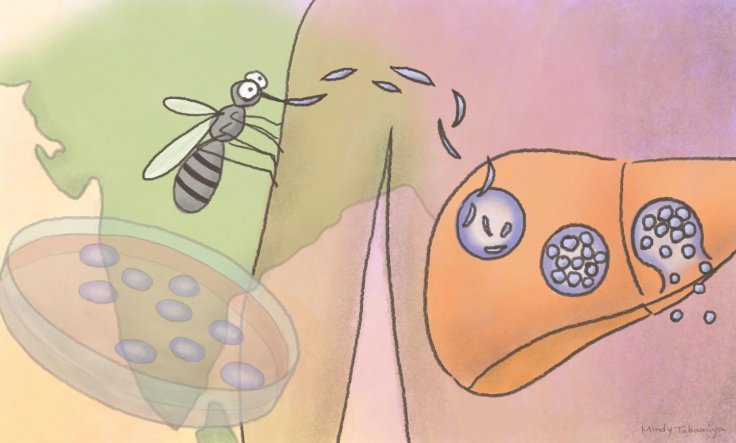Malaria affects millions of people worldwide every year. According to the WHO, an estimated 228 million cases were reported in 2018, which resulted in nearly 405,000 deaths. A new study conducted by researchers from Kyoto University's Institute for Integrated Cell-Material Sciences (iCeMS) has found valuable insights into the disease's effect on liver cells.
Conducted in India, the research focused on the type of malaria caused by the protozoan parasite, Plasmodium vivax. It aimed to understand the liver stage of the infection. "Our study provides a proof-of-concept for detecting P. vivax infection in liver cells and provides the first characterization of this infectious stage that we know of in an endemic region in India, home to the highest burden of vivax malaria worldwide," Kouichi Hasegawa, the corresponding author of the study said in a statement.
A Lethal Disease

Malaria is a mosquito-borne disease—specifically from the Anopheles genus—that is caused by protozoa from the Plasmodium genus. They are P. vivax, P. falciparum, P. malariae, P. ovale, and P. Knowles. Of these, malaria caused by P. vivax is the most common. While this strain is less virulent than the most deadly form caused by P. falciparum, it can lead to severe complications and even death.
P. vivax causes malaria in around 7.5 million people worldwide every year, of which about half are reported from India. Though the current study does not provide a resolution to the high rate of infections, it does provide new and localized knowledge of the parasite's liver stage.
Breeding Malaria Parasites
For the study, Anopheles stephensi mosquitos were bred by the researchers in an insectarium in India. Blood from patients with P. vivax infection in India was fed to female mosquitoes. Mature sporozoites—the stage where the parasite is infective—were collected from the salivary glands of the mosquitoes after two weeks. Cultured liver cells were then exposed to the extracted sporozoites.
Exposing Liver Cells to the Parasite

Various kinds of liver cells were tested by the scientists in order to understand what types can be infected as they would within the human body. The research team also used liver cells cultured from three different kinds of stem cells. Importantly, pluripotent stem cells converted from bleed cells of malaria-infected patients were turned into liver cells.
This was done in order to learn if these cells had an increased genetic susceptibility to the infection. These cells, however, were found to be only mildly infected due to the exposure to the parasitic sporozoites. Explaining why liver cells were used for the study, Hasegawa said, "The Plasmodium vivax malaria parasite can stay dormant in a person's liver cells up to years following infection, leading to clinical relapses once the parasite is reactivated."
Opportunity to Provide Individualized Treatment
Additionally, the scientists gleaned that UIS4—a vital malaria protein component—interacted with a human protein known as LC3. This provided the parasite with protection from elimination. Therefore, the study demonstrated that the investigative approach of the authors can be employed to study this key stage of P. vivax's life cycle.
As the infection rates were low in cells, it suggests that not many anti-malarial compounds can be tested on them at once. However, the scientists learned that the cells can be used to test if a particular drug compound can be effective in the case of a specific patient. This presents the opportunity to provide better-individualized treatment.
The scientists were also able to study one of the many aspects of parasite liver infection. They observed the malaria protein UIS4 interacting with the human protein h LC3, which protected the parasite from destruction. This demonstrates their approach can be used to further investigate this important stage in the P. vivax life cycle.









